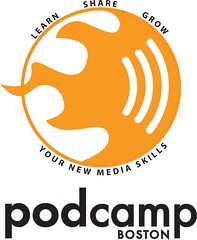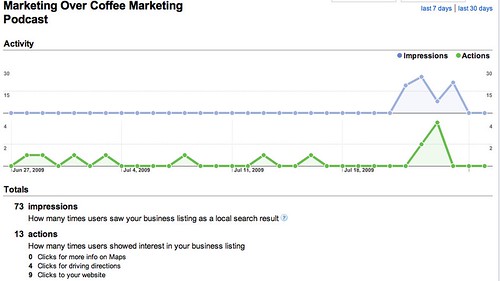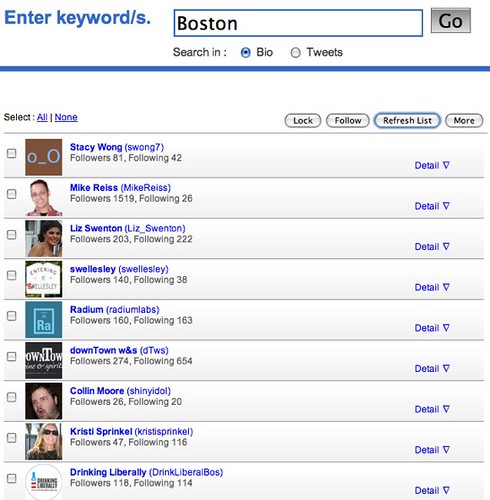One of the most interesting conversations at PodCamp Boston 4 was on the lawn, a discussion about race, gender, and social media. Lots of different viewpoints, from a belief in a glass ceiling in social media to an equally strong belief in the democratization of media and the power of us all to break out and succeed.
If you’ve known me for a while, you know squarely where I stand. I’m nearly antisocial on the entire topic of self-imposed limitations.
“Argue for your limitations, and sure enough they’re yours.” – Richard Bach
If you believe there’s a glass ceiling, there is.
If you believe there’s someone holding you down, you will act as though there is.
If you believe that life is unfair and that you’ll never succeed, you won’t. I guarantee it, because whatever success you have you’ll subconsciously sabotage anyway.
I fundamentally believe in two tenets: first, you are statistically more likely to succeed if you’re awesome, and second, if you’re not swimming the blue ocean, you’re dead meat. Let’s tackle these in reverse.
Blue ocean strategy is a popular marketing concept that’s so obvious, it’s amazing someone had to write a book about it. Red oceans – oceans filled with blood and sharks – are where idiots try to do business. They see a crowded space and try to jump in the crowd, yell louder, cut prices lower, claim unfair competition, and generally get eaten by the bigger sharks. Red ocean strategy is opening a fourth pizza shop in a strip mall. The only ones who win in red ocean strategy are the biggest, baddest sharks.
Blue ocean strategy says swim where the oceans are clear, blue, and non-competitive. There are niches for everything, and a decent number of them are profitable. This is where you do business, because it’s much easier being profitable when you have no competition.
The insurance against competition is the second part – being awesome. When I say that what matters isn’t between your legs but between your ears, I’m not being snarky. If you have awesome on your side, race, gender, religion – none of it matters. People want awesome. People want to buy from awesome, and will pay a price premium for awesome.
The real problem, the problem we’re too often too polite to say, is that most of the time, we’re not awesome. Most of the time, what we have to sell or offer actually sucks. Believe me, I sell student loans. I know what it’s like to market a product that completely sucks. Thus, we have to gussy up our total suckage in the trappings of awesome in the hopes of fooling the less clever. “Ooh, this doorknob doesn’t actually work but it has a Facebook fan page!”
If you believe your race, gender, or other defining demographic factor is a limitation in your efforts, then that means one of two things: you’re either swimming in bloody red ocean, in which case you’re an idiot (regardless of gender, race, etc.) for not moving to clear waters, or the product, service, or idea you have sucks. Sorry. There’s no neat and kind way to say that.
Barack Obama didn’t become President of the United States by whining that the white man was holding him down. He made his own game, leveraged all the technology like no one else ever had before, and swam the blue ocean to 1600 Pennsylvania Avenue.
someone didn’t become lead organizer of the first and oldest PodCamp by demanding a chance because she’s got a vagina. She got there because she’s got a brain, got there by being awesome, by always delivering, by always getting done whatever needed to get done, and when the time came for Chris Brogan and I to turn over the reins, her record – irrespective of gender – spoke for itself.
Look carefully at all of the tools of social media. Has Twitter ever said, sorry, you’re black, you can’t have more than 1,000 followers because only white people should have lots of followers? Has Facebook ever said, sorry, you can’t create a fan page because you’re a woman and women shouldn’t have fans? When you download MySQL, PHP, or jQuery, do any of the tools say, sorry, you’re Muslim and MySQL only works for God-fearing Christians?
No.
All of the tools and technology are available to everyone. You have complete and total equality in terms of tools and raw opportunity to make your own game. How you use those tools, what results you create are only limited by your talents and your self imposed limitations.
You are more than your limitations. You are much better than you think, but you have to awaken that inside you. If you get out of your own way and shatter your limiting beliefs, you’ve won half the battle.
I’ll finish with this thought, a lyric from Jewel:
No longer lend your strength to that which you wish to be free from.
Every moment, every ounce of energy you spend on your limitations is time and energy you don’t have to spend being awesome, swimming your way through the blue ocean to success.
I wish you limitless quantities of awesome and blue waters, no matter what gender, race, or religion you are.
Did you enjoy this blog post? If so, please subscribe right now!
Enjoyed it? Please share it!
Get this and other great articles from the source at www.ChristopherSPenn.com












